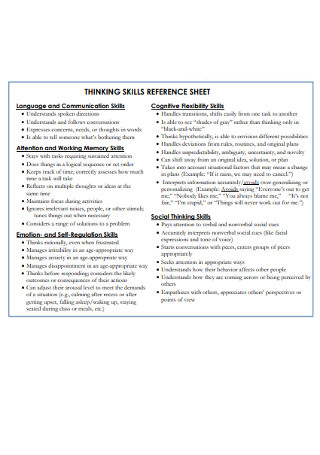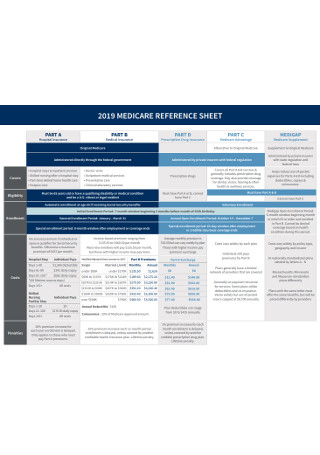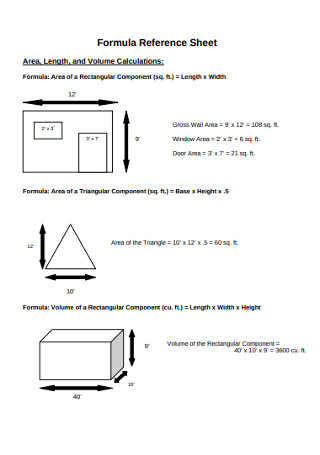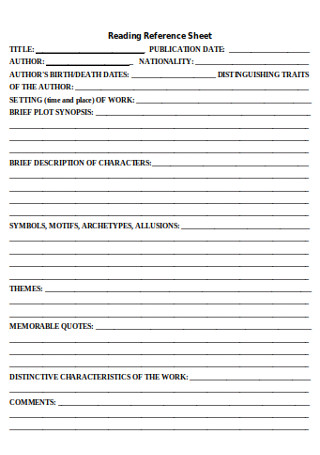50+ Sample Reference Page & Sheet Templates
-

References Edition Page
download now -

Sample Reference Page
download now -

Formatting Reference Page
download now -

Reference Page in Format
download now -

Library Online Reference Page
download now -

Reference Bibliography Page
download now -

Sample Writing Reference Page
download now -

Sample Total Package Reference Page
download now -

Sample Reference Documenting Page
download now -

Constructing Reference Page
download now -

College On-Line Resources Reference Page
download now -

Sample University References Page
download now -

Reporting Reference Page
download now -

Reference Audit Page
download now -

Quick Jumper Reference Page
download now -

Reference Document Page
download now -

Ratio Reference Page
download now -

Reference Legal Notices Pages
download now -

Reference Development Page Policy
download now -

Reference Page Report
download now -

Reference Clinical Page Policy
download now -

Habits of Mind Reference Page
download now -

Material Reference Page
download now -

Manual Reference Page
download now -

Graduation Numeracy Reference Pages
download now -

Research Paper Reference Page
download now -

Mathematics Reference Sheet
download now -

High School Reference Sheet
download now -

Final Reference Sheet
download now -

Student Aid Reference Sheet
download now -

Science Reference Sheet
download now -

Eligibility Quick Reference Sheet
download now -

Volunteer Service Reference Sheet
download now -

Thinking Skills Reference Sheet
download now -

Performance Indicator Reference Sheet
download now -

Tax Reference Sheet
download now -

Codes Reference Sheet
download now -

Table Crew Reference Sheet
download now -

Connector Reference Sheet
download now -

Incident Management Reference Sheet
download now -

Medicare Reference Sheet
download now -

PreAlgebra Reference Sheet
download now -

Meeting Reference Sheet
download now -

Formula Reference Sheet
download now -

Cross Reference Sheet
download now -

Custome Reference Sheet
download now -

Handy Reference Sheet
download now -

Photo Reference Sheet
download now -

Coordinate Geometry Reference Sheet
download now -

Reading Reference Sheet
download now -

Gail Case Reference Page Template
download now
What Is a Reference Page?
Academic research is both the cornerstone and the building blocks of new knowledge that has significant contributions to social development. While some students undermine the importance of research, it is undeniable that it plays a vital role in different aspects of our lives—sometimes, without us knowing. Since the first appearance of journals during the 1660s, the estimated number of scholarly research published as of 2009 reached over 50 million. For a research paper to be ready for publication, it needs to include several sections, such as the abstract, introduction, methodology, literature review, the main body of the paper, and the reference page. In this article, we will turn our focus on the last part of a research paper—the reference page.
As readers flip through an academic paper or scroll through a research website, they will see on the very last page a list of sources cited in the main text. We refer to this sheet as the reference page. Its purpose was to provide the readers with a means to retrieve or locate the sources of the information mentioned in the research paper. Moreover, it enables authors to give credit to other academians whose intellectual contribution made the research possible. Aside from research papers, a reference page also appears in some essays. Every source mentioned in scholarly research or essays should be a part of the reference list and vice versa.
What Are the Different Citation Styles?
In writing, plagiarism is a seemingly unforgivable blunder. It is the act of copying or making use of someone else’s work and claiming it as your own—intentional or not. The word stemmed from the Latin term plagiarus, which means kidnapper. Writing original content from end to end in whatever medium is the key to establish credibility and keep your image as a reputable writer in the long run. Should there be a need for you to incorporate someone else’s work in your paper or essay, make sure to cite the sources for you to dodge plagiarism accusations. Listed below are the different citation styles you can choose from. These citation styles will determine how you should cite your sources and in what order you should present various information about them (e.g., author’s name, date of publication, title).
APA (American Psychological Association) Style
One of the commonly used citation formats is APA style. The Americal Psychological Association established this format to achieve a more consistent citation and formatting rule for scientific writing. In 1929, a collaboration was made between psychologists, anthropologists, and business managers. These professionals share a common goal, which was to have a simple and systematized process of scientific writing for readers to comprehend scholarly research and other written material easily. Thus, the establishment of the APA style.
Although this citation style is currently in its 7th edition, several universities and journals still make use of the 6th edition. For in-text citations, you need to specify the author’s last name, followed by the year of publication. If you directly quote a text from another author’s work, make sure to include the page number after the year of publication. In the 7th edition, the in-text citation for works with three or more authors only mentions the first author followed by “et al.”. For the reference list, the 7th edition of the APA style mentions the last name and initials of up to 20 authors. Whereas the 6th edition only specifies seven authors. Lastly, the arrangement of information in the reference list for the APA style (6th edition) goes like this: author’s surname, initials, date published, the title of the source text, publisher location, and publisher. The current way of writing the reference list no longer includes the location of the publisher.
MLA (Modern Language Association) Style
Another citation style used by the students and professionals in language and literature is the MLA or Modern Language Association style. The Modern Language Association of America, which was founded in 1883, published its first handbook in 1951. The manual provides both students and professionals an explanation of the principles of citing sources and the system of documentation that the MLA style follows. The parenthetical in-text citation for the MLA format mentions the author’s name and the page number. At the end of the paper, the sources of every quoted, summarized, or paraphrased text in the main content should be included in the “Works Cited.” The list should have the following information about the source: author’s name, the title of the source, title of the container, other contributors, version, number, publisher, date of publication, and location. However, it is not necessary to include every element in the citation since not every information is relevant to every source you cite.
Chicago Style
Published during 1906, the Chicago Manual of Style was established with the same purpose of other styles—for writers and researchers to give proper credit to their sources by citing them in the paper. Chicago style comes in two types: (1) notes and bibliography and (2) author-date. Writers can make use of either method in documenting their sources. The notes and bibliography system of citing sources is through a numbered footnote wherein each note has a corresponding high superscript number in the main text. On the other hand, the parenthetical in-text citation for the author-date system includes the author’s surname and year of publication. Researchers in the field of sciences and social sciences usually use this system when citing their sources. Regardless of the citation method you prefer, you should write a reference list at the end of the paper. It should include the name/s of author/s, year of publication, book title, edition, place of publication, and publisher.
Picking the Best Sources: A Researcher’s Guide
Searching for factual and credible information in any medium is a necessary process in writing. It enables writers to deliver pieces of vital knowledge to the readers and avoid misinformation at the same time. Moreover, it helps researchers establish a strong foundation for their study. For this reason, it is important to evaluate your sources before deciding to include their written work in your paper. However, with the existence of thousands and millions of information on the internet, distinguishing satirical information from legitimate ones can be a challenge for researchers and writers. Choose the best sources by checking the following:
Aside from the things mentioned above, one of the factors you should consider when looking for a reliable source is the type of information you want to acquire. For example, if you want to know about the current events, you should read newspapers or magazines, watch television, or listen to podcasts. Looking for numerical data and statistics? Then, visit government websites and non-profit websites or read research studies from professionals in various fields. Bear in mind that the type of sources you can make use of partly relies on the classification of information you want to have.
How Should You Write a Reference List?
After undergoing the researching and writing process, the last thing that would complete your paper is the reference list. If you need help in writing one, you may refer to the guidelines provided below.
Step 1: Collate Information Needed
Before you jump on the last page of your paper and write the reference list, you first need to have a complete list of the information that needs to reflect on the reference page. Having all the necessary information at hand will make the reference-writing process easier for you. It would also be helpful if you note down every source of information you will paraphrase, summarize, or quote during the researching process. This way, you won’t have to backtrack your sources for documentation. Furthermore, you should be careful in selecting your sources—avoid using information from publications older than five years as much as possible.
Step 2: Provide a Title
Regardless of the citation or reference style you make use of, you must provide a title for your list of references like any other parts of scholarly research. However, you should note that there is a standard title for every type of citation or format. For the APA style, the title would be “References,” while the MLA style uses “Works Cited” as its title.
Step 3: Format the Document
The formatting of the document depends on the style guide you follow. It may either be the APA (American Psychological Association) style, MLA (Modern Language Association) style, Chicago style, or other styles required by your teacher or in your field of study. Since the APA style is commonly used among students, teachers, and other professionals, let us discover how you should properly format the reference page of a research paper.
In the current edition, one can make use of various font styles such as Calibri 11, Arial 11, Lucida Sans Unicode 10, Times New Roman 12, and Georgia 11. Then, set the margin to one inch on all sides. There should also be a hanging indention for the references, which means that the second and the following lines of each reference must have 5-7 (spacebar) spaces. Moreover, references should have double spaces between each other.
Step 4: Enter Required Information
For a reference list to fully serve its purpose to both the readers and the writers, it should have all the necessary information. If you are referencing a journal article, it should include the names of the author, year of publication, the title of the article, name of the periodical, volume, issue number, page number, and the DOI (digital object identifier). According to the APA reference guide, the information should appear like this: Author, A. A., & Author, B. B. (Year). Title of the article. Name of the Periodical, volume(issue), page#–page#. https://doi.org/xxxx. For books, the surname and initials of the authors come first, then enclose the copyright year in parenthesis and end it with a period. Next comes the title of the book (period), and the name of the publisher (period).
In an unending quest for knowledge, both students and professionals conduct research to provide answers to questions or solutions to problems. However, these studies make use of other academians’ works as their foundation and as a form of validation. As they collate ideas from other co-researchers, giving proper citation and credit is a must. Therefore, it is imperative for research papers and other scholarly journals to have reference pages or footnotes. Now that you know the importance and the fundamentals of reference sheets, it wouldn’t be hard for you to write a reference page when needed. You can also refer to the sample documents provided in this article as your guide.
